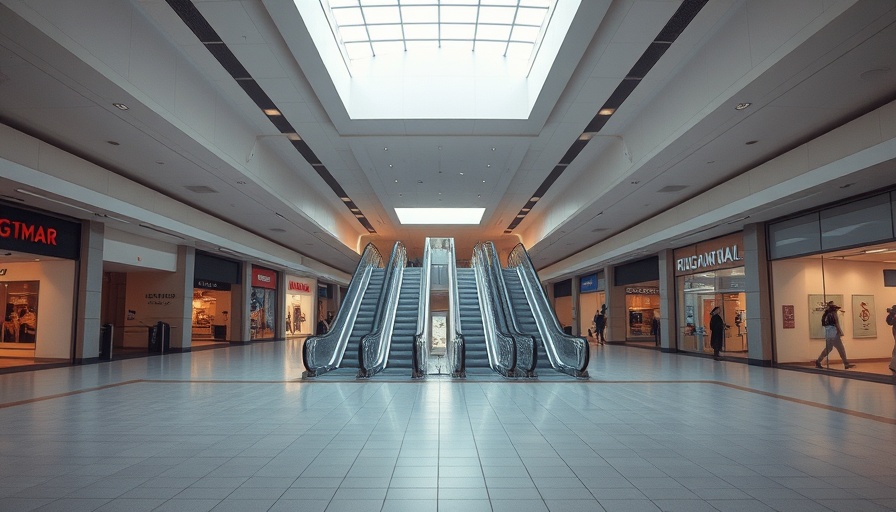
Retail Transformation: Understanding Ridgmar Mall's Evolution
Opened in 1976, Ridgmar Mall stood as a beacon of retail enthusiasm within Fort Worth, a place that echoed with laughter, shopping bags rustling, and the exhilaration of youth. Like many American malls of the era, it captured a slice of Americana that abundant culture movies like 'Fast Times at Ridgemont High' immortalized. However, as retail trends undergo seismic shifts towards open-air configurations and experiential offerings, the mall once adorned with anchor entities like Neiman Marcus and JCPenney now grapples with an identity crisis that forces its stakeholders to rethink its future.
The Challenges Facing Ridgmar Mall
Tracy Gray, executive vice president at JLL’s retail team, succinctly encapsulated the mall's current predicament, calling it an "economic quagmire." With anchor stores like Neiman Marcus relocating to The Shops at Clearfork in 2017, Ridgmar has seen a rapid decline in its retail relevance. Council member Michael Crain acknowledges that these changes reflect larger trends witnessed across the nation, wherein even once-thriving indoor malls now struggle to attract consumers and tenants. Where vibrant gatherings of teenagers once thrived, there is now uncertainty.
Consumer Preferences: The Shift to Open Air
This transformation aligns closely with modern consumer preferences—shoppers today seek out open-air shopping environments that encourage not just purchasing, but gathering and experiencing. The decline of indoor malls isn't merely a local phenomenon, but a nationwide trend as well. The rise of lifestyle centers that blend retail with recreational experiences indicates a shift away from traditional shopping as an isolated event to a holistic, community-centric experience.
Creating Community Connections at Ridgmar
Despite the ongoing challenges, it's essential to recognize that Ridgmar Mall still holds sentimental value and potential as a community hub. For Trevy Neville, whose teenage escapades involved venturing to the food court with friends, the mall symbolized freedom. Revamping Ridgmar to foster community connections could breathe new life into its halls. Transforming it into a space for local events, pop-up markets, art installations, or even farmers' markets could reclaim its status as a gathering point in Fort Worth.
What Does the Future Hold?
Future predictions for Ridgmar Mall hinge on understanding consumer behavior and evolving retail strategies. While it might be challenging to envision a mall revival, innovative approaches could allow it to redefine what it offers. Initiatives might include integrating technology, enhancing customer service, and focusing on sustainability to attract a demographic more interested in experiences than mere transactions.
Conclusion: Embracing Change for a Brighter Tomorrow
As Ridgmar Mall navigates these troubled waters, it stands at a crossroads. Will it adapt and thrive as a new kind of community center, or will it fade into obscurity? Engaging with local voices will often lead the way forward. By preserving its spirit while embracing the adaptability that’s become essential in retail, Ridgmar can aim to rekindle the warmth from its heyday. The future of Ridgmar Mall not only matters for retailers and consumers but for the heart of the Fort Worth community. Let's come together to support our local businesses and preserve the spaces that defined our past and can shape our future.
 Add Row
Add Row  Add
Add 




 Add Row
Add Row  Add
Add 

Write A Comment